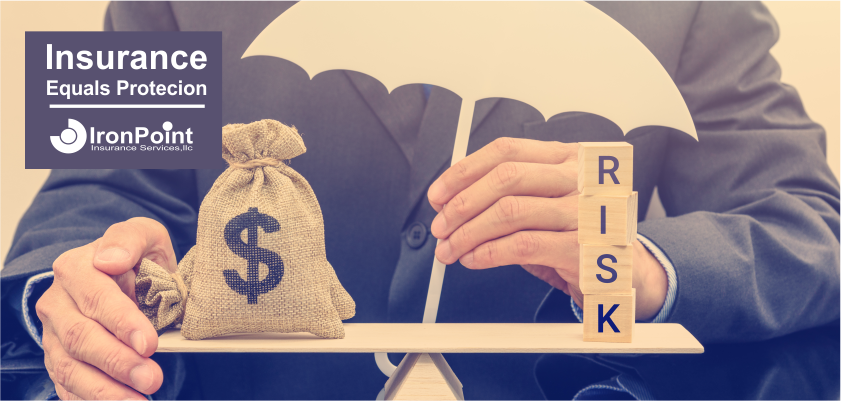Insurance Protection is Why You Buy Insurance, Not Price

As insurance professionals, we have a tough job, we need to provide our consumers with the right insurance protection, but frequently all the consumer wants is to save money. This desire to save money is totally understandable, none of us what to pay too much for … well anything.
We all want to feel like we’re getting a good deal when we make purchases, and that goes for insurance protection too.
But as insurance agents, a focus on price complicates the issue because frequently, saving money comes at a trade-off of coverage or service. And as professionals, it’s our job to find you the right insurance protection. If this comes at a lower premium, that’s a huge benefit, but the priority is making sure the assets and the legacy of our clients are secure.
There are both high-value and low-value brands
Just like other products and services, insurance protection has both low and the high value brand options. But because so much of the insurance advertising these days focuses on price, it’s easy to see how the message of coverage is lost.
Shining such a red-hot spotlight on price isn’t normally something that you see in company advertising … heck even soft drinks advertise on value … 7up is the “uncola” and the taste comparison advertising between Pepsi and Coke are legendary.
I can remember, as a young boy, seeing commercials on television for insurance, and they all seemed to discuss coverage, financial security, and insurance protection. There was the Allstate “Good Hands,” or Prudential’s “Get a Piece of the Rock,” and my personal favorite, MetLife’s “Get Met it Pays.”
These days, good advertisers in other categories do a better job of giving the consumer a sense of what their brand is about, and why you do, or don’t want to pay the price to own their products. For instance, if asked what BMW cars are good for, you might say performance. Of course, because they are “the ultimate driving machine.” Or if you were asked what Volvo is good at, you’re likely to respond with “safety.”
What these two auto brands have in common is that they have positioned themselves around something that gives the consumer an understanding of what they stand for, and if you want what they offer, you’re willing to pay the difference to own their products. But that is woefully lacking in the insurance space.
I trivialize the argument just a bit, certainly both BMW and Volvo offer something more than a message, their products have to live up to the claims, and they do.
The same is true for insurance protection, there are high-value options and low-value options, and the high-value options do, in fact, have differences in quality. But I’ll get to that in just a bit.
Why such a focus on the price of insurance protection?
I’m not sure I have a perfect answer for this, and I’m not a business historian. But to me this seems to be tied to three things.
First, insurance is an intangible good or service, meaning that you don’t use it on a daily basis. For many of us we think we’ll never use it and it’s a waste of money. So, psychologically, we are predisposed to want to find ways to manage or mitigate this expense in our monthly budgets. Because the perception that insurance is a product you won’t use, it’s easy to be enticed by a price call-to-action.
The second reason has to do with technology. In the early 90’s many software companies created a product insurance agents could use to input data in a single place and see the rates for all the companies for with they had an appointment. The initial reason for the software was to create efficiency in the agent’s process, but in reality, it changed the way they sold policies. Instead of discussing coverage and insurance protection, the agent focused on the price. And why not, if they didn’t, the insurance agent down the street would.
The third reason was with the kickoff of GEICO’s popular 15-minutes advertisement campaign, and the introduction of the GEICO Gecko. GEICO doesn’t have insurance agents (at least not the type your used to). There is nobody to communicate their value, so it was easier to have a commercial that created a call-to-action as opposed to a positioning message to promote the brand. In response, other carriers followed them down the price call-to-action rabbit hole.
The technology and the kickoff of the GEICO Gecko advertisements occur about the same time, so these events create a near perfect storm, and the industry hasn’t really recovered … in fact, they appear to be going further into the rabbit hole each year.
We actually purchase insurance for protection, not for price
Like I said earlier in this post, nobody wants to pay too much for a product or service. But we also need to take a step back … go beyond all the price messaging in the television commercials, and remember why we buy 
We buy insurance to protect our assets.
A good financial adviser will likely instruct you that you need to have an adequate savings and insurance protection as the foundation of your financial plan. Having a safe and secure foundation is the reason we purchase insurance protection.
Every day we undertake certain risks, like liabilities associated with automobile accidents, water damage or fires in our home, advertising or contract risk for a business, and even death or health issues. For most of us, the costs associated with adjudicating these risks, should we incur a loss, could wipe us out financially. So, we transfer this risk to our insurance carriers in exchange for a premium.
The amount risk your insurance carrier is willing to accept is controlled by the insurance policy, and this is where not all insurance carriers are the same. If they were, for the most part, all policies would cost exactly the same.
So, when there is a difference in the amount being charged, and your rate is lower, one of the following is happening:
- The insurance carrier’s policy isn’t accepting all the risk, and the policy has excluded something that makes paying losses less expensive,
- The insurance carrier operates more efficiently, and has passed operational savings on to you as the consumer.
- The insurance carrier is just better at pricing than the other carriers, and has found new pricing segments, that you happen to be a part of, where they can provide discounts.
Options 2 and 3 do happen, but those are very rare … especially if you’re getting a policy from a smaller company, with less data to use to create these discounts.
The most frequent difference is in the amount of coverage being provided. And this isn’t in the limits or deductibles, it is often in the policy exclusions (when coverage doesn’t apply), and in the terms, when coverage is reduced or not provided at all. It can also be in the “sub-limits.
When we assume that coverage is the same from company-to-company, and therefore the only difference is the in the price, we make mistakes and purchase a policy that doesn’t meet our expectations … or worse, leave us in a financial bind.
When do you discover you’ve purchased the wrong insurance policy?
Often you discover you’ve purchased the wrong insurance policy when it’s much too late … you’ve already suffered the loss.
Unfortunately, if you aren’t asking the right questions, or you don’t have an agent who provides you consultation, the only time you discover if you have an insurance policy that offers any real protection is when you need it most … during the claim process. That’s where the rubber hits the road.
And if you purchased on price alone, you only have yourself to blame. Essentially, whether you knew it at the time or not, you were saying that you were willing to retain more of your personal or business risk … you were self-insuring. That was the trade-off you made to save money per month or year on your insurance protection.
It doesn’t have to be this way
We can change the course we are on, and all we need to do is change the conversation. The rates are going to be the rates … the cost of medical for injuries, the cost of materials for repairs, and the cost of providing the service is similar from company-to-company.
So focus on the coverage offered and ask yourself if you need what is offered.
This is just like the BMW of Volvo examples, if you don’t want to the “ultimate driving machine” you can always purchase a Honda, still a nice car and great value, but not as tight the turns and has less horsepower.
The same can be true for your insurance, if you don’t have the assets to protect, or you don’t have the budget, you can still elect the lesser value product … but you need to understand what that is first.
If your insurance companies aren’t going to advertise these benefits, then you need to consult with an insurance agent. The services of an insurance agent are totally free, and you can get consultation, quotes and information. And if the insurance agent isn’t providing this service for free … you need to talk with a different insurance agent.

Compare Quotes Online
Want to know if you can save on home or auto insurance? See for yourself. Start a quote today.
Give us a Ring
1-877-334-7646
Call today and speak with a professional insurance agent.